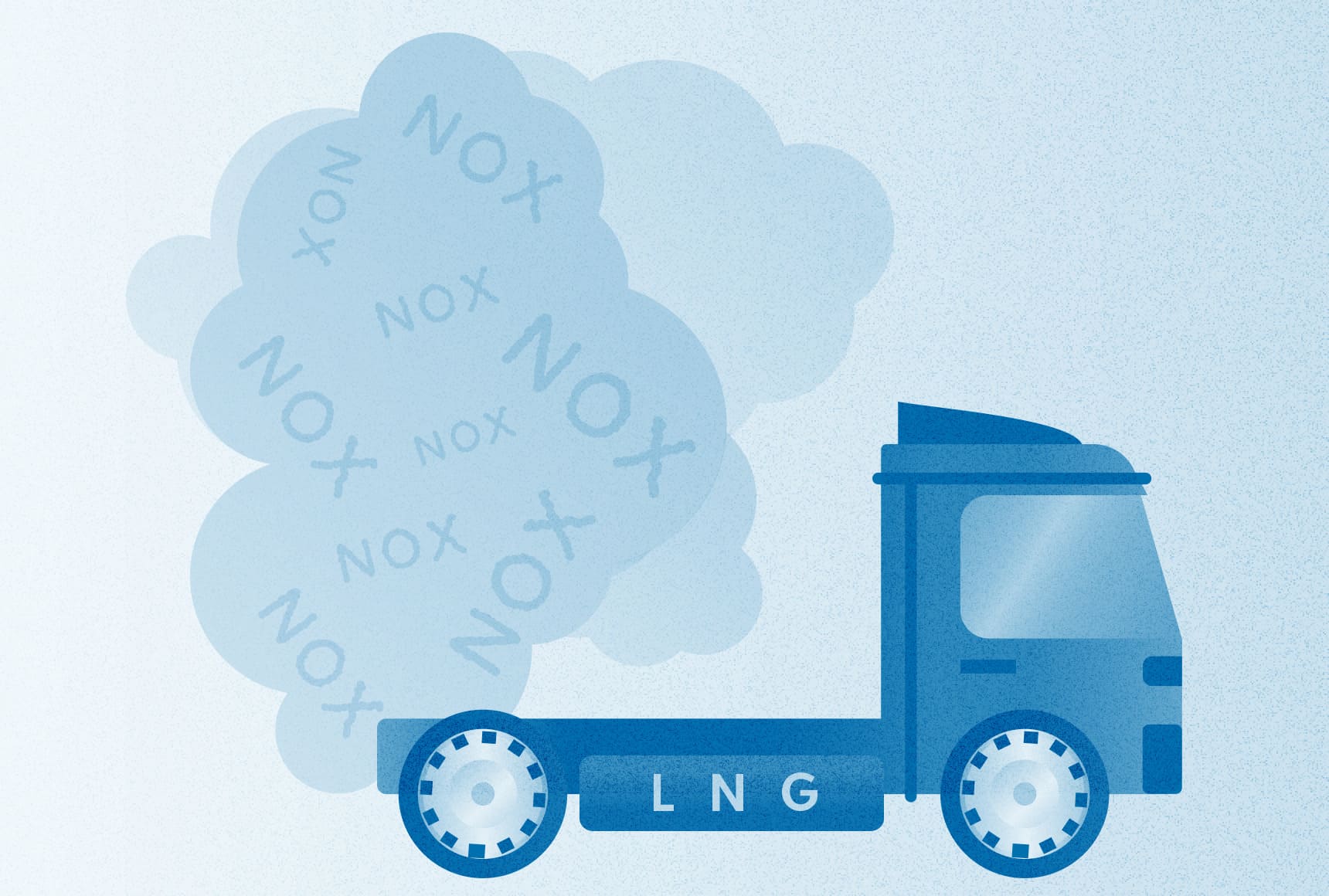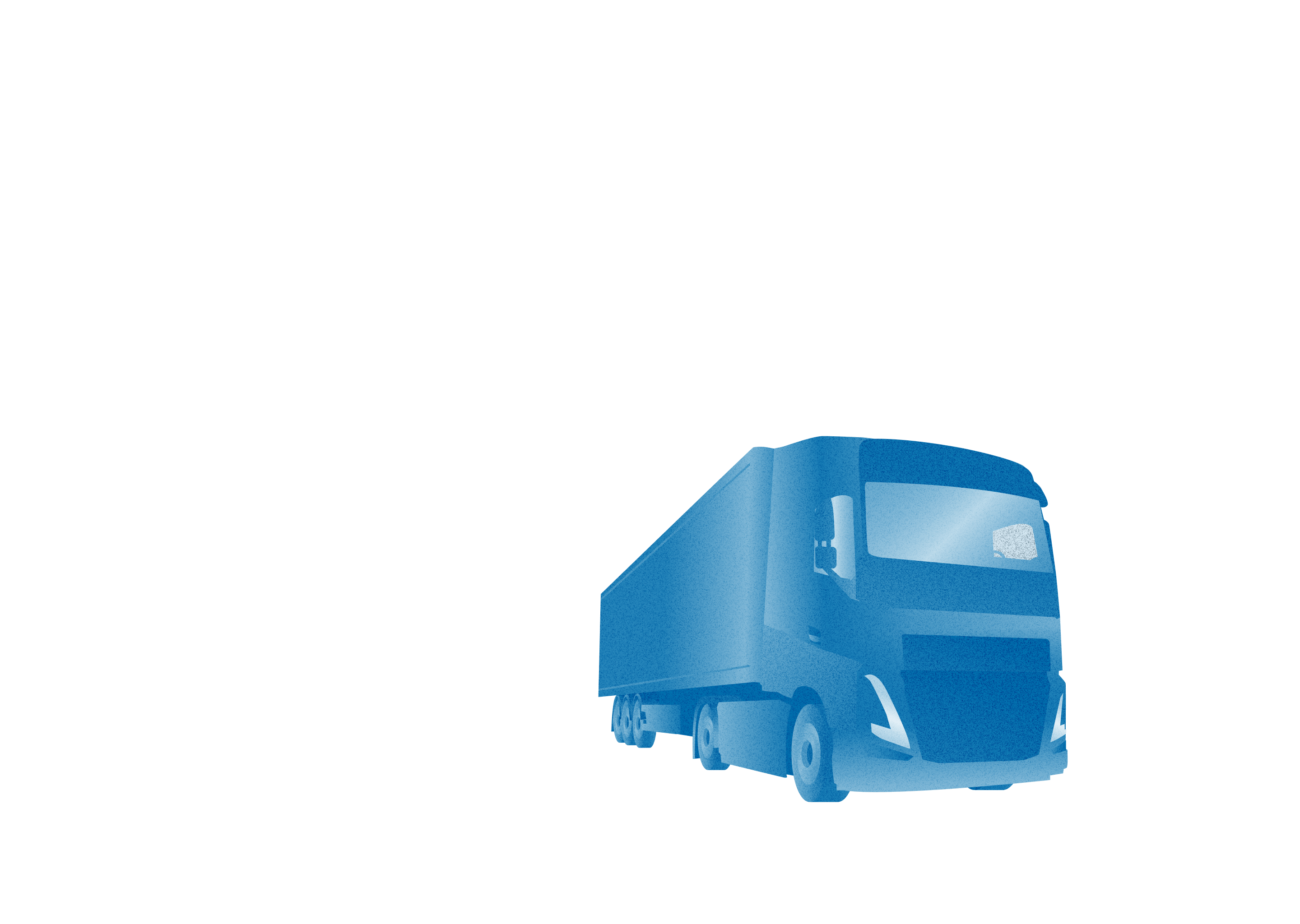If ever there had been a culmination of T&E’s work on one transport mode, it was on trucks in 2019 when three of our campaigns came to fruition at once. Heavy goods vehicles, which account for 2% of vehicles but are responsible for 22% of road transport CO2 emissions and 15% of road collision fatalities, would become cleaner, more aerodynamic and safer thanks to three new laws that T&E pushed for.
In February, EU lawmakers agreed to bring forward the introduction date for more aerodynamic, safer truck cabs. T&E had long fought for the reform to speed up the roll-out of more rounded truck fronts that allow drivers to better see pedestrians and cyclists and improve fuel efficiency. From 1 September 2020 truckmakers are permitted an additional 80-90cm of cab length in return for improving the aerodynamics, vision, safety and driver comfort of the truck cab.
"Europe puts a stop, for the first time, to polluting emissions from heavy vehicles. Stef Cornelis of the NGO Transport & Environment, one of the most influential in Brussels in this field, believes this is just the beginning. 'The standards will have to be stricter when they are reviewed in 2022,' he warned."
El Pais - 12/02/2019
A week later the European Parliament reached a deal with EU governments and the European Commission on the bloc’s first ever CO2 targets for trucks. Manufacturers would have to cut the carbon emissions of vehicles they sell in Europe by almost a third by 2030 compared to 2019 levels. New heavy-goods vehicles sold in 2025 would be required to emit 15% less CO2.
Savings
T&E welcomed the standards, which will mean fuel savings of more than €20,000 for a truck in the first five years for hauliers and businesses after 2025, and almost €60,000 per vehicle over a five-year period after 2030. However, the 2030 target should be reviewed upward in 2022 if we want to halt global warming, we cautioned.
At T&E’s urging, the European Parliament won a non-binding, but strongly incentivised, sales target for zero emission trucks. From 2025, manufacturers whose new truck sales are more than 2% electric and hydrogen vehicles will be rewarded with a less stringent CO2 target. The deal also includes a 2-tonne additional weight allowance for zero-emission trucks.
The sales benchmark resulted from business pressure from major companies allied with T&E’s goal of zero-emissions freight transport. In January, they wrote to the climate commissioner, key MEPs and EU governments. Retailers Carrefour and Spar Austria, and transport companies Alstom, Geodis and DB Schenker, were among those telling lawmakers that a yearly sales benchmark is vital if the transport sector is to reduce its emissions and fuel costs.
In our sights
Lives will also be saved as a result of new truck standards agreed in 2019. After years of educating and cajoling lawmakers about poor driver vision, MEPs and EU governments decided to mandate new cab designs that would enable their drivers to better see pedestrians and cyclists on the road around them. T&E had been pushing for the world’s first ‘direct vision’ standard – under the EU’s revised General Safety Regulation – since the GSR was last updated in 2009.
One thousand cyclists and pedestrians die every year in truck collisions. The Commission found that improving the direct vision performance of trucks would save up to 550 lives per year. Truckmakers will have to comply with the direct vision standard no later than January 2026.
Hit the gas
Despite the legislative progress, T&E had to remain vigilant about old threats to progress: some manufacturers continued to beat the drum for gas powered vehicles - despite liquified natural gas being just another fossil fuel. T&E had already exposed the negligible greenhouse gas reductions of LNG trucks compared to diesel ones. Now its air pollution needed to be exposed. We published the results of on-road tests commissioned by the Netherlands government that showed LNG trucks are not better than diesel, and some models can in fact pollute the air up to five times more than diesel trucks.
The results shook the complacent truck automotive sector and flew in the face of truckmakers’ claims that gas trucks cut nitrogen oxide (NOx) emissions by more than 30%. It sent a clear message to EU governments to stop encouraging the uptake of polluting LNG trucks with the extremely low tax rates that fossil gas for transport enjoys in most countries.
The three LNG trucks tested emitted 2 to 5 times more poisonous NOx than the diesel truck with the lowest test result when driven in a combination of urban areas, regional routes and motorways. When driven in towns and cities, the gas trucks release 2 to 3.5 times more NOx than the tested diesel truck with the lowest emissions. Trucks powered by biomethane (biogas) would have the same air pollutant emissions as trucks running on fossil gas because the fuel characteristics are the same. The on-road tests also show that all three gas trucks tested produce levels of particle emissions comparable to diesel trucks.
October brought the news that leading truckmaker Daimler would end the development of gas trucks. It also pledged to phase out diesel trucks over time, only producing electric and hydrogen trucks by 2039.

Selling point
By year’s end T&E was already moving to convert the climate rhetoric of the new Commission into more ambitious action on truck emissions. Joining with brands and retailers – such as Nestlé, Unilever, REWE Group and AB InBev – as well as transport industry players and NGOs, we called on the Commission to set sales targets for zero-emissions trucks and vans. In a letter, we told incoming EU climate chief Frans Timmermans that binding truck and van sales targets for 2025 and 2030 – as part of his European Green Deal – are needed to overcome a lack of supply of the clean vehicles that businesses have been calling for.
The letter gave voice to the growing demand for an EU strategy for zero-emissions city logistics as the supply of clean trucks from manufacturers is nearly non-existent. Shifting freight transport away from fossil fuels is one of the most effective ways to tackle carbon and air pollution, but right now many companies cannot source any more than a handful of electric trucks.



